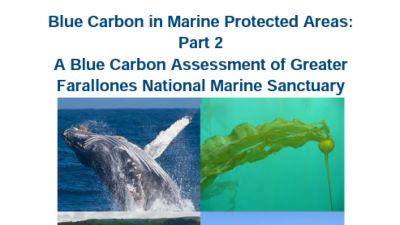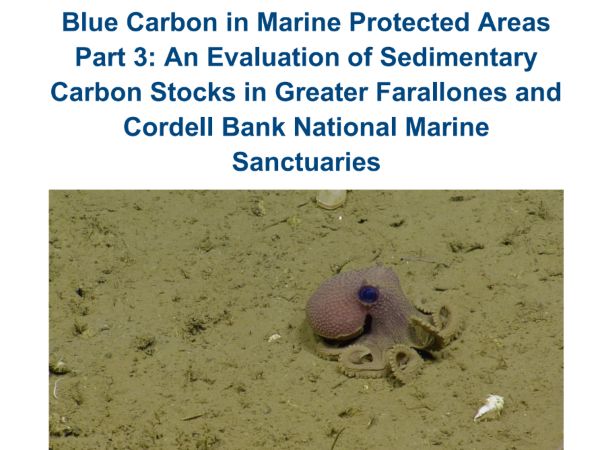Blue carbon is the carbon captured and stored in coastal and marine ecosystems, such as tidal salt marshes, mangroves, and the deep ocean floor. Blue carbon ecosystems can help address climate change resulting from the global emission of carbon dioxide into the atmosphere by removing and storing some of that atmospheric carbon dioxide for long timescales in sediments and deep water. Sanctuaries contain blue carbon ecosystems; by protecting and restoring these ecosystems they preserve and grow an important nature-based climate solution.

The benefits associated with blue carbon ecosystems are increasingly recognized by MPA managers and deserve significant attention on a global scale. Increasing awareness of these benefits among MPA managers and the public can play a key role in promoting effective management and associated co-benefits. This report provides information on the benefits of blue carbon ecosystems and highlights how they can be effectively integrated into MPA management.

This story map highlights two reports on blue carbon in marine protected areas. It encourages and promotes discussions around blue carbon, including research priorities, and policy and management considerations.

This StoryMap provides an overview of the NOAA Blue Carbon Inventory Project and other helpful resources on inventorying and managing coastal blue carbon.

Though blue carbon is a rapidly growing area of research, guidance for how to apply blue carbon information in MPA management is lacking, and for some sequestration processes, completely absent. Led by Greater Farallones National Marine Sanctuary (GFNMS), with support from the Greater Farallones Association, this review is Part 1 of a series to inform and guide MPA managers in the assessment, protection, and management of blue carbon habitats and processes. The purpose of this first report is to serve as an informational, guiding document to aid ONMS and MPA managers worldwide in considering and including blue carbon processes within management decision-making.

Blue Carbon in Marine Protected Areas: Part 2 is a case study assessment of select blue carbon habitats (eelgrass and saltmarsh-associated sediments) and processes (kelp export and whale falls) for Greater Farallones National Marine Sanctuary, and serves as a model for other sites in the National Marine Sanctuary System. The habitats and processes assessed in the report together accumulate 4,950 megagrams of carbon each year.

Blue Carbon in Marine Protected Areas: Part 3 demonstrates the carbon storage value of offshore marine protected areas and identifies seafloor carbon “hotspots” based on a novel relationship between sediment grain size and organic carbon content. This report provides an estimate of carbon storage in the sanctuaries’ surficial sediments, and discusses various sources of disturbance to the seabed and the importance of seabed protection.